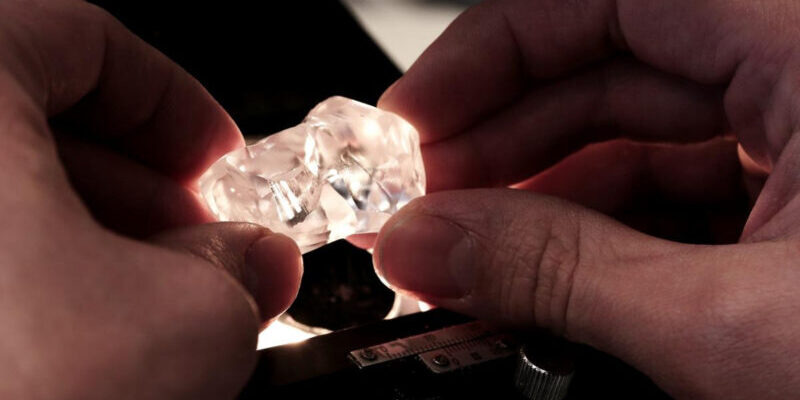After a continued strong recovery in global consumer demand for diamond jewelry during the end of the 2021 financial year, 2022 started with healthy demand, with stock conditions improving across all segments, with polished stones rising due to the good business environment.
The De Beers Group report for the 2022 financial year points out that the World Diamond sector has known, in the last two years, remarkable production levels, taking into account the increased demand for diamond jewellery.
The document ensures that the start of the Russia/Ukraine conflict initially affected the industry’s income, as diamond companies sought to understand the potential impact on supply and demand, both from consumer self-sanction in western and formal markets.
Despite the negative impact of the conflict, as well as the slow recovery in demand for luxury travel, consumer buying momentum for diamond jewelry in the main market, the United States, continues to grow at record levels .
In other economies, such as Canada, production rebounded 22 percent to 1.2 million carats in 2022 (up from 1.6 million carats in 2021) as a result of low-grade handling and Covid-19-related absenteeism.
SADC Region
The Diamond market in the Southern Region of the African continent has seen a strong recovery in its production levels, despite the downward trend seen in the world market due to the conflict between Russia (one of the world’s major producers) and Ukraine.
Despite this, production of rough diamonds in the region increased by 10 percent in 2022, reaching 16.9 million carats (against 15.4 million carats recorded in 2021), reflecting a strong operational performance by producing countries.
The levels reached, according to the document, were affected by the heavy rainfall during the first quarter of 2021 in Botswana, one of the largest diamond producers in the region.
Last year, diamond production in Botswana increased by 10 percent to 11.7 million carats (up from 10.7 million carats in 2021) due to increased processing at mines in Orapa and Jwaneng, as well as increased degree of planning in this deposit..
With a view to increasing production, the Tswanian Government and the De Beers Group have extended the existing contract for the sale of rough diamond production in the Debswana project for a further 12 months, until June 2023. The parties have agreed to the extension to allow completion of the ongoing issues.
In Namibia, production increased by 50 percent to one million carats (up from 0.7 million in 2021), mainly due to the continued strong performance of the new diamond recovery vessel, the Benguela Gem, in the first quarter of 2022.
In South Africa, diamond production increased by 20 percent to 2.9 million carats (compared to 2.4 million carats in 2021), due to the treatment of higher quality ore from the final cut of the open pit mine in Venetia.
market outlook
Demand for diamonds from global consumers continues to rise in key regional markets.
Currently, there has been strong concern about global macroeconomic conditions and significant pressure on key markets that could result in reduced consumer spending, impacting demand for diamond jewellery.
Despite the market’s short-term challenges and uncertainties, the outlook for demand for diamond jewelry remains positive, while the global supply of rough diamonds is expected to decline due to a lack of recent discoveries.
Beers reveals expectations with operations in Angola
The South African giant De Beers says that the first prospecting data indicate that its two concession sites in the provinces of Lunda-Norte and Lunda-Sul have great geological potential.
In an interview with “Rough & Polished”, the group’s spokesman, David Johnson, said he was looking forward to starting field work to investigate this fact through its joint venture partnership with Endiama.
Field activities will be focused mainly on aerial surveys, while the discovery drilling process is being prepared.
David Johnson revealed that De Beers will initially have a 90 percent stake in the joint venture, with Endiama holding the remaining 10 percent, and could rise to 20 percent over time, subject to certain preconditions.
De Beers signed with the Angolan Government, in 2022, an investment contract for the mining sector for a period of 35 years, as it considers Angola to be one of the most prospective countries in the world in terms of geological potential to be explored.
![]()




